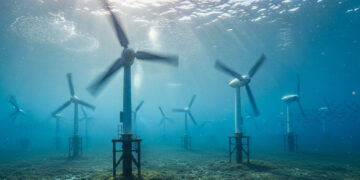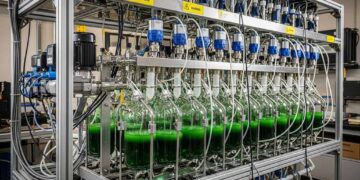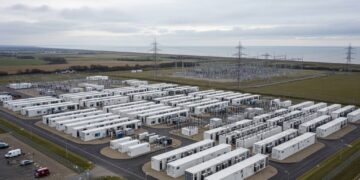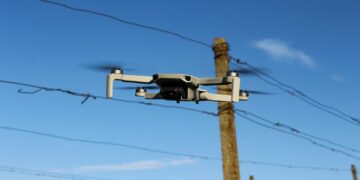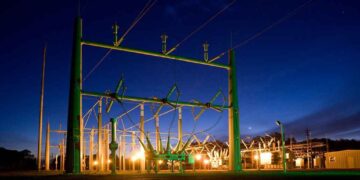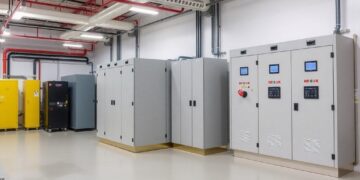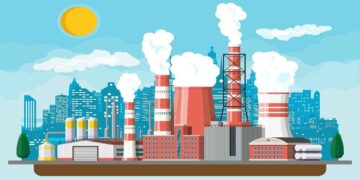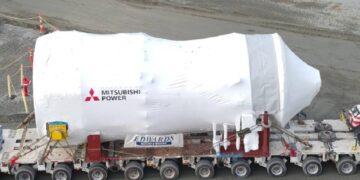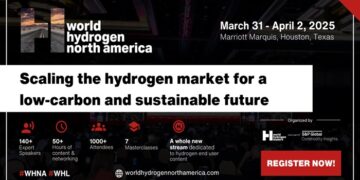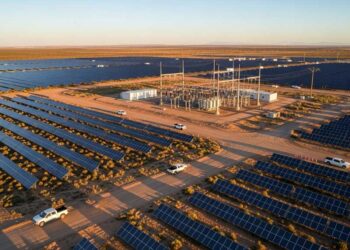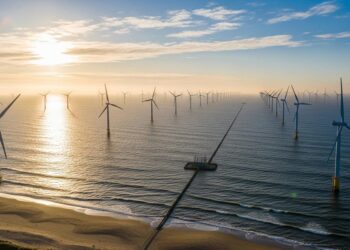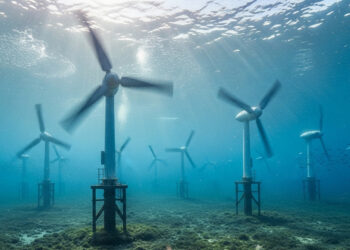As global economies shift to cleaner and greener energy sources, hydrogen has emerged as an energy carrier that is going to decarbonize industry, transport, and power. However, one of the major barriers to fully unlocking the power of hydrogen is its storage. Hydrogen, as the lightest element, has a low volumetric energy density, which makes storing it challenging and energy-intensive.
Efficient hydrogen storage solutions are vital to uptake in transport and industrial applications, and for hydrogen vehicles to go mainstream, they need lightweight, compact and high-pressure storage systems. In industry as well, safe and scalable storage solutions are critical in the integration of hydrogen into production processes. The advances in hydrogen storage technologies are making it possible for the widespread adoption of this energy multipurpose agent.
The Current State of Hydrogen Storage
Current hydrogen storage technologies can be generally classified into three categories: compressed gas, cryogenic liquid, and material-based storage. Both technologies present benefits, but there are limitations; technical and economic constraints on how, and where, they can be used.
Compressed Gas Storage: A Practical Solution with Limitations
One of the methods to store hydrogen gas is to compress it and store it in high-strength storage tanks at high pressures (typically between 350 and 700 bar). This type of storage is most commonly used in hydrogen fuel cars and refuelling stations owing to its relative simplicity and proven technology.
But compressed gas storage has the disadvantages of high energy to compress and the necessity for high strength, low weight materials to fabricate tanks. Composite material advances, in the form of carbon fiber-reinforced polymers, have made storage tank strength-to-weight ratios much better, but cost is the inhibitor to general use.
Cryogenic Liquid Storage: Higher Density with Higher Complexity
Cryogenic liquid storage is the process of cooling hydrogen to very low temperatures (-253°C) to liquefy it. For applications that require large volumes of hydrogen such as shipping and aviation, compressed gas storage outperform more conventional compressed gas storage in energy density.
Cryogenic storage systems use advanced insulation methods to minimise boil-off losses, which is their greatest challenge, and in order to preserve the liquid state. Such systems have high operational expenses and sophisticated infrastructure, rendering them less viable in small or decentralized settings.
Material-Based Storage: Unlocking Hydrogen’s Potential at the Molecular Level
Material-based storage technologies such as metal hydrides, chemical hydrides, and porous materials have been innovative approaches to hydrogen storage. Hydrogen can be stored chemically or physically, through adsorption in specific porous solids like metal organic frameworks (MOF’s). There is currently no commercial feasibility, mainly due to the slow absorption/desorption rates and bulky storage mass, however, the benefits of MOFs, with their larger surface area and tunable properties, make it promising even if it is experimental; it merits continued investigation with regards to scaling-up.
Breakthroughs in Hydrogen Storage Systems
Recent developments in hydrogen storage technologies are addressing the trade-off between acceptable capacity, safety, costs and scalability, which will help to promote further hydrogen acceptance and uptake within the transport and industrial sectors.
- High-Pressure Composite Tanks: Lighter and Stronger
High pressure hydrogen storage is now a reality because to advances in composite tank design and development. These tanks are constructed using lighter materials such as carbon fiber-reinforced plastics and modern resins, resulting in a significant reduction in total weight while maintaining strength and safety.
For instance, Type IV hydrogen storage vessels with a polymer liner wrapped in carbon fiber have been the norm for hydrogen motor vehicles. There have been significant recent advancements regarding optimization of storage capacity within these vessels without increasing the size of the tanks; this has allowed extra driving distance in hydrogen fuel cell vehicles (FCEV’s).
- Solid-State Hydrogen Storage: Portable and Stable
Metal hydrides and chemical hydrides are two examples of the solid-state hydrogen storage systems that are undergoing extensive research into the possibility of stable and portable storage. They chemically store hydrogen in a solid matrix, which makes it safer and reduces storage pressures.
As an example, hydrogen storage materials have been developed based on magnesium hydride, which has been proven to store hydrogen gas at room temperature and pressure.
- Enhanced Porous Materials: The Rise of MOFs
Crystalline materials having highly porous structures, known as metal-organic frameworks (MOFs), can contain hydrogen molecules at exceptionally high densities. Superb outcomes attained in controlled lab environments prove that MOFs are capable of storing large amounts of hydrogen at low pressures.
Chemical engineering advancements in the last several years have allowed the fabrication of MOFs with thermal stability and changeable pore sizes, reducing the challenges associated with practical material scaling. Since MOFs have a larger capacity and can significantly reduce the space required for bulk production, they show great promise in the industrial hydrogen storage sector.
Hydrogen Storage in Transport Applications
Fuel cell cars powered by hydrogen are becoming a reality because to advancements in hydrogen storage technology. As an alternative to traditional internal combustion engines and battery electric vehicles, fuel cell cars must be able to safely and efficiently store a sufficient amount of hydrogen aboard.
Hydrogen fuel cell vehicles (FCEVs) rely on high-pressure storage tanks to achieve the energy density required for extended driving ranges. Some of the obstacles to widespread use have been decreased by technological advancements in tank technology, which have enhanced refuelling efficiency and expanded storage capacity.
Also, for usage that requires larger quantities of hydrogen, cryogenic storage is being considered for use in heavy-duty transportation vehicles such as buses, trains and trucks. Liquid hydrogen is an attractive option for long-distance transportation due to its higher energy density, which allows for greater distances covered with less frequent recharging.
Table 1: Hydrogen Storage in Transport Applications
| Transport Mode | Preferred Storage Method | Advantages |
| Passenger Cars | High-pressure Composite Tanks | Lightweight, compact design |
| Heavy Trucks & Buses | High-pressure or Cryogenic Storage | Higher energy density |
| Aviation & Shipping | Cryogenic Storage | Suitable for large volumes |
Hydrogen Storage for Industrial Applications
Besides transportation, hydrogen storage represents a key opportunity among industrial uses where hydrogen is the chemical feedstock for a process or a clean fuel. Industries such as refining, steelmaking and ammonia synthesis need reliable, adaptable, and eventually scalable hydrogen storage systems for their processes, and with the physical properties of hydrogen, as well as new storage innovation, both assuring reliability and adapting to demand should be achievable.
Geological storage of hydrogen underground in formations like salt caverns and depleted oil fields is emerging as an economical means for industrial-scale applications. These sites have the potential to stock massive amounts of hydrogen for long durations, acting as a buffer during seasonal supply and demand fluctuations.
Industries that require decentralised applications are currently being designed with modular hydrogen storage systems that combine advanced monitoring technologies with high-pressure tanks. The technologies are adaptable, so factories may use hydrogen without spending a fortune on new pipes and other infrastructure.
Chart: Comparison of Hydrogen Storage Methods for Industrial Applications
| Storage Method | Energy Density (MJ/kg) | Suitability for Industry |
| High-Pressure Tanks | Moderate | Decentralized production and usage |
| Cryogenic Liquid Storage | High | Large-scale industrial hydrogen supply |
| Geological Storage | Variable | Seasonal and long-term storage |
Addressing Challenges and Enhancing Adoption
Hydrogen storage systems have come a long way, but there are still some issues. The need for standardised infrastructure, the high cost of high-tech materials, and the energy needed for liquefaction and compression continue to discourage their broad usage.
To solve these problems, governments, businesses, and academic institutions must work together. Innovation and deployment can be accelerated through policy stimuli, such as infrastructure investment and subsidies for hydrogen storage systems. Research into new materials, such as lightweight composites and high-capacity porous materials, aims to reduce costs without compromising performance.
Conclusion
Transportation and industry are just two of the many uses for hydrogen, and the hydrogen economy can’t function without storage systems. Advances in high-pressure, cryogenic, and material-based storage technologies are overcoming the age-old issues of safety, efficiency, and scalability, pushing hydrogen closer to being a mainstream competitor to conventional fuels.
As innovation continues to advance the future of hydrogen storage, the incorporation of such systems into transport and industrial use will release the full potential of hydrogen as a clean and multifaceted energy carrier. The pathway to enabling the remaining technical and economic issues will require forward-thinking leadership in research, enabling policy, and industry participation.
The hydrogen-powered era of uses is drawing nearer and the advances in hydrogen and compressed hydrogen storage portrayed in this report demonstrate the adaptability and resolve at the core of our clean energy revolution. Hydrogen storage, which has historically presented obstacles to development within the clean energy industry, is evolving into a pathway for a decarbonized and sustainable future.








